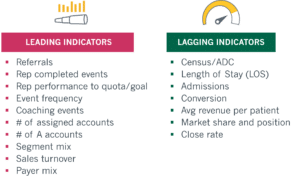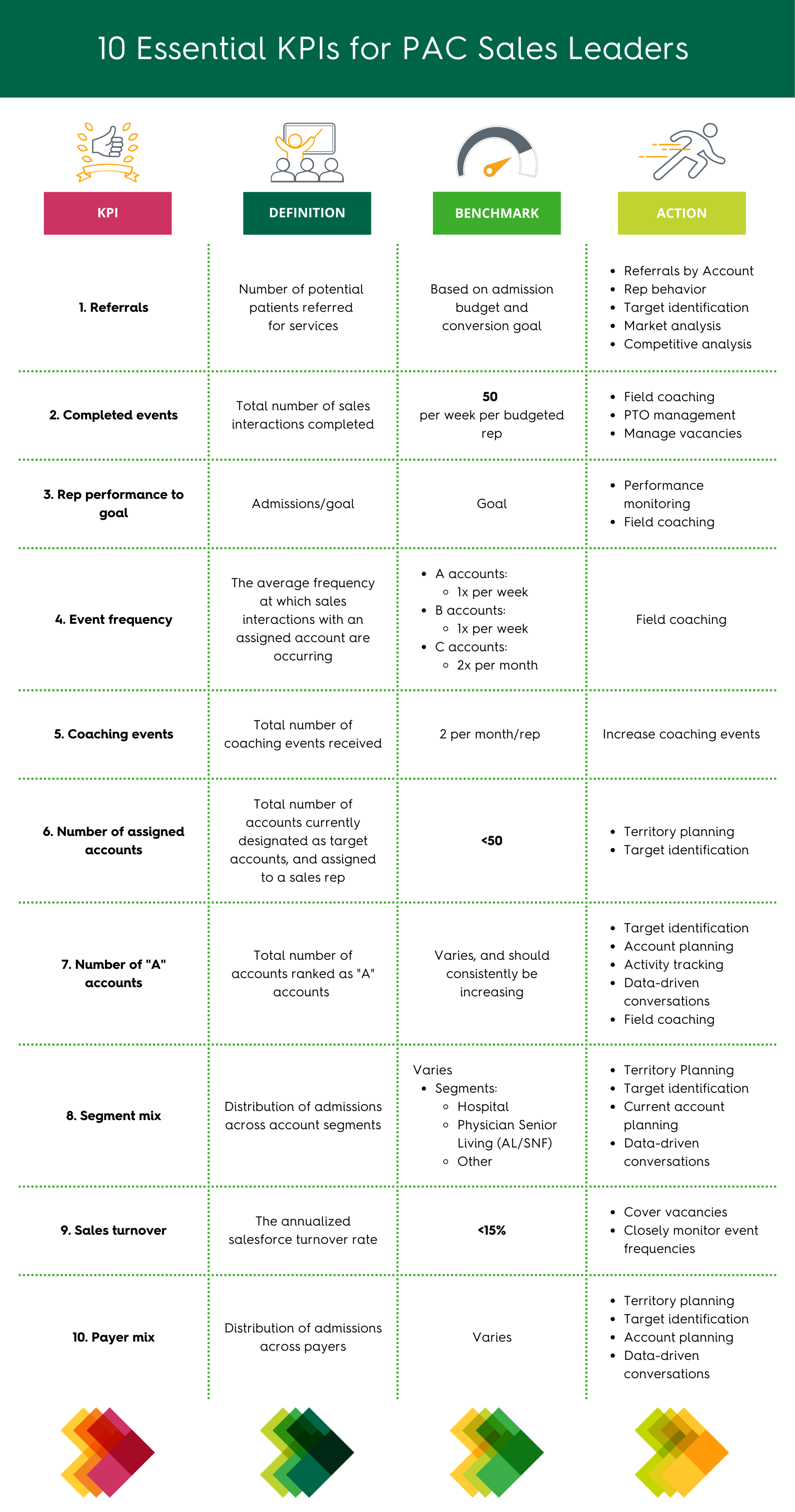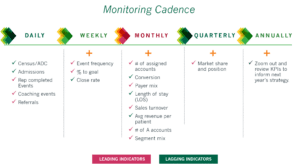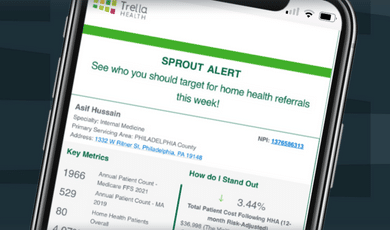In today’s fast-paced post-acute care industry, maintaining a competitive edge and achieving desired objectives requires organizations to measure, monitor, and evaluate performance effectively.
Key Performance Indicators, or KPIs, are invaluable tools in this process, providing measurable targets that gauge the performance of sales representatives and the overall organization.
In this article, we will delve into the world of KPIs within the post-acute care market, exploring:
- What is a KPI?
- Measurable Indicators
- 10 essential KPIs for post-acute care leaders
- Best practices for measuring and monitoring KPI growth
- What your CEO wants to know
Whether you are just beginning to explore KPI implementation or seeking to re-evaluate your organization’s focus, this article aims to guide you toward your growth goals and thrive in your market.
Let’s dive in!
What is a KPI?
According to Forbes – “a Key Performance Indicator or KPI is a measurable target that indicates how individuals or businesses are performing in terms of meeting their goals – reviewing and evaluating KPIs helps organizations determine whether or not they are on track for hitting their desired objectives.”
Measurable Indicators for KPIs in post-acute care
Now that we have defined what KPIs are – let’s dig a little deeper into measurable indicators to consider when creating and tracking your KPIs:
What are the leading indicators for post-acute care growth?
Leading indicators are measures of your work to achieve your organization’s objectives. These indicators can be predicted, allowing you to watch your KPIs and get a good sense of whether you will hit your goals.
In addition, leading indicators allow you to make adjustment to your strategy before it’s too late – before you come in below target.
What are lagging indicators for post-acute care growth?
Lagging indicators are retrospective measures that tell you where you have been. These indicators provide a snapshot of what has already occurred and are utilized to evaluate the success of past activities.
Therefore, these indicators help measure the overall impact or results your organization has achieved – or fallen short of.
TIP: Your CRM should show you leading and lagging indicators.
Examples of leading and lagging indicators for post-acute care growth
So now that we’ve defined what leading and lagging indicators are let’s go over some examples of each:

By combining these indicators – your organization can get a FULL picture of your performance, thus knowing where your sales team is being successful and where you can improve.
10 Essential KPIs for PAC Sales Leaders
Let’s explore the infographic below, which outlines essential KPIs for implementation, along with benchmarks and actionable steps to ensure success:

Best practices for measuring and monitoring KPIs for post-acute care growth
Consider these important guidelines to enhance the measurement and monitoring of your KPIs, enabling you to optimize performance and drive success in your organization:
- Define clear and measurable KPIs
- Avoid tracking too many KPIs
- Use visualizations
- Focus on exceptions
- Establish a monitoring cadence and hold leaders accountable
- Take action based on the insights gained
- Continuously review and refine KPIs
Now that we’ve defined a few best practices – let’s look at an example of a detailed monitoring cadence your team can utilize:

TIP: analyze your KPIs annually – see what worked and what didn’t so your organization can prepare for next year and achieve your objectives.
What KPIs your CEO cares about
CEOs don’t need to know everything regarding the organization’s KPIs (such as the example above).
Let’s look at what your CEO wants to know when it comes to KPIs:
Exceptions
Your CEO wants to know and understand what the exceptions are, such as:
- Where are you not performing as expected, and why.
- For example, reps aren’t hitting their completed events targets or coaching events are down
- What are you going to do about it
Actions
Next, they’ll want to see you and your team’s actions to change the outcome.
Remember: With leading indicators, you can make changes in real-time that WILL impact your outcome.
Less is more
Lastly, make it simple.
For example,
Here is where our problem is; this is what we – as a team – are doing about it; here is what I expect to happen as a result and how long I expect it will take us to correct this path.
Set you and your team up with the right KPIs and benchmarks, and you will set yourself up to deliver to your CEO the right way.
By following this example – you will look like the phenomenal sales leader you are because you will be speaking their language.
Conclusion
Throughout this article, we have explored the importance of KPIs within the post-acute care market, covering essential topics such as:
- The definition of KPIs
- Measurable indicators
- Crucial KPIs for post-acute care leaders
- Best practices for measuring and monitoring KPI growth
- Information your CEO wants to know
By leveraging the knowledge and insights shared here, you can make informed decisions, optimize performance, and stay ahead of the competition in your post-acute care market.
Want to learn more? Watch our on-demand webinar “Know Your KPIs: Key Performance Indicators to Drive Post-Acute Success.”














